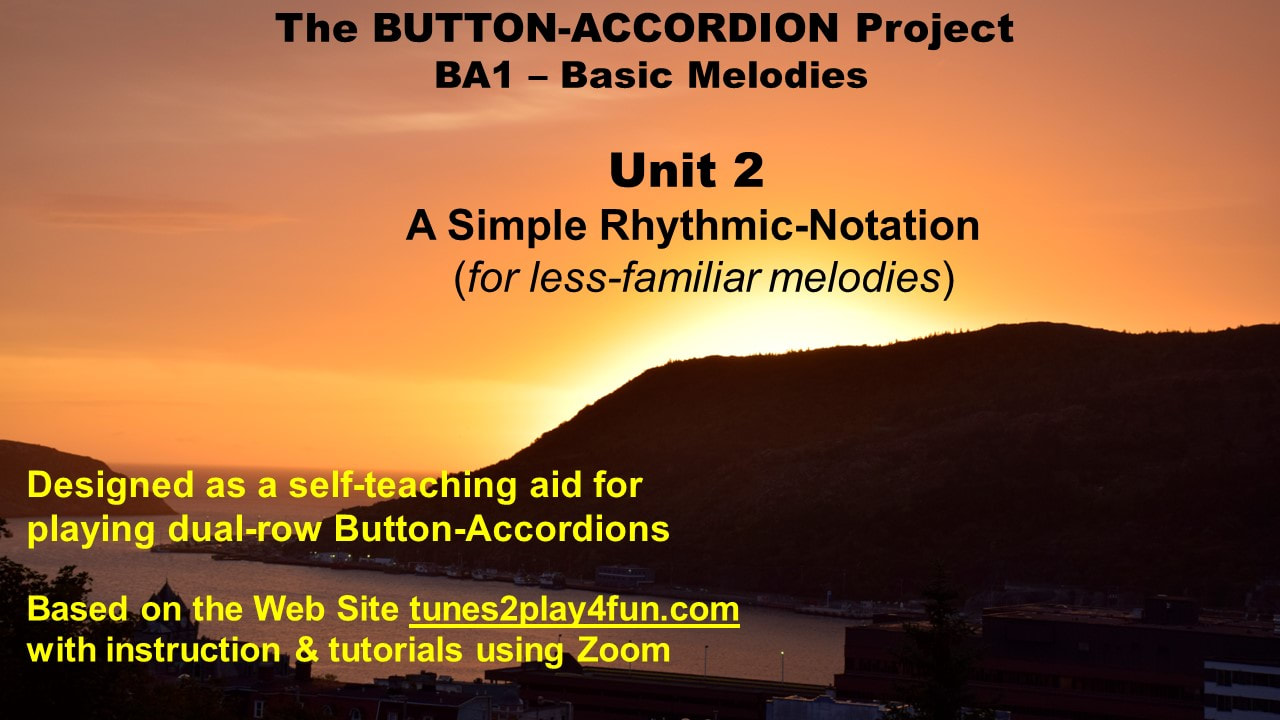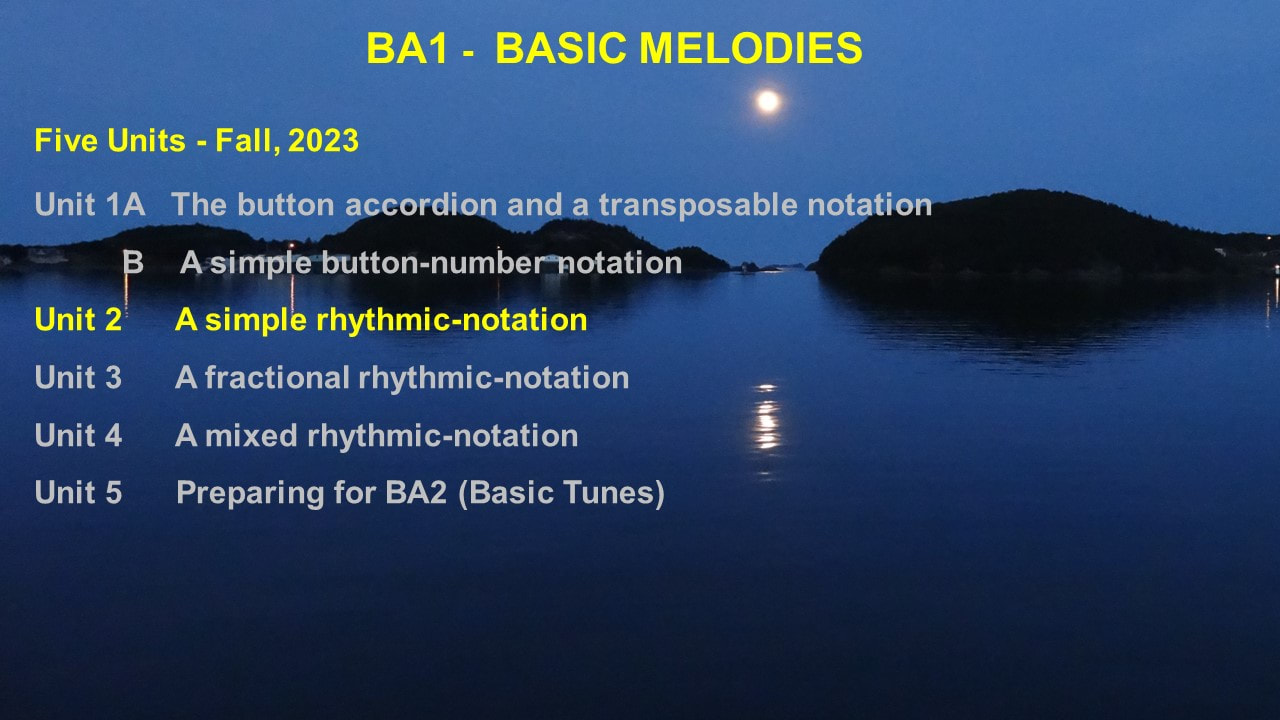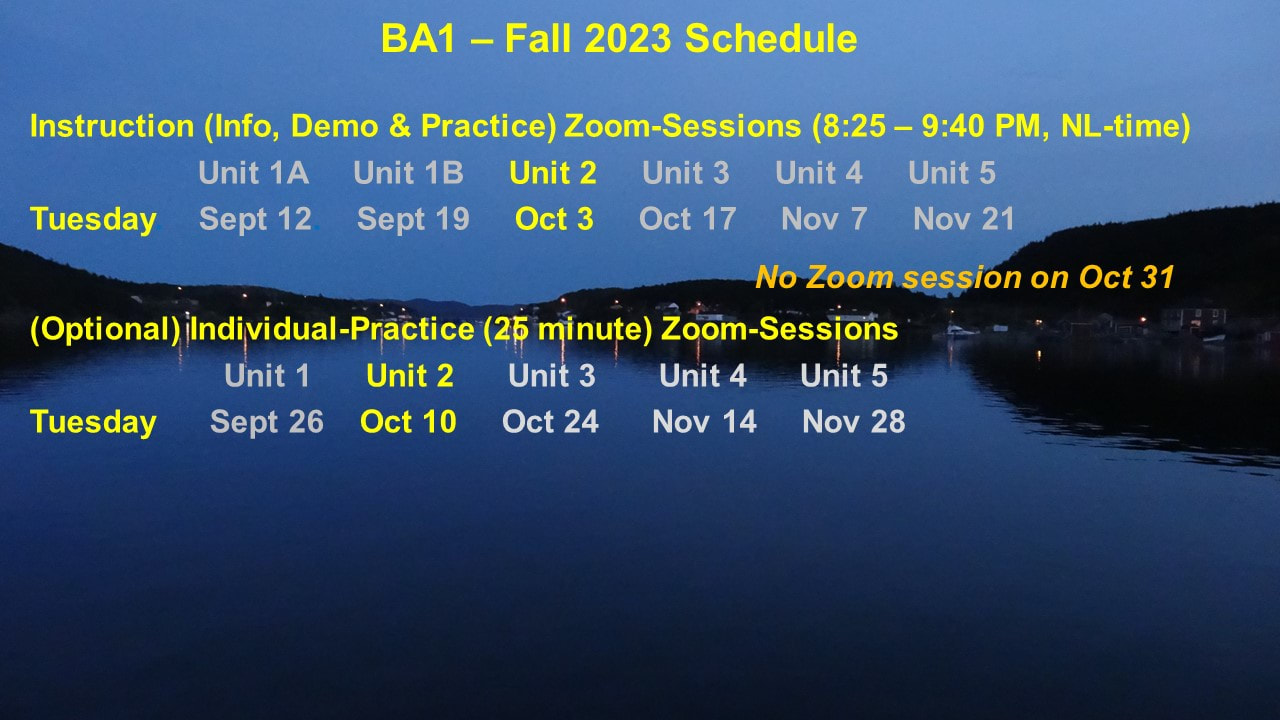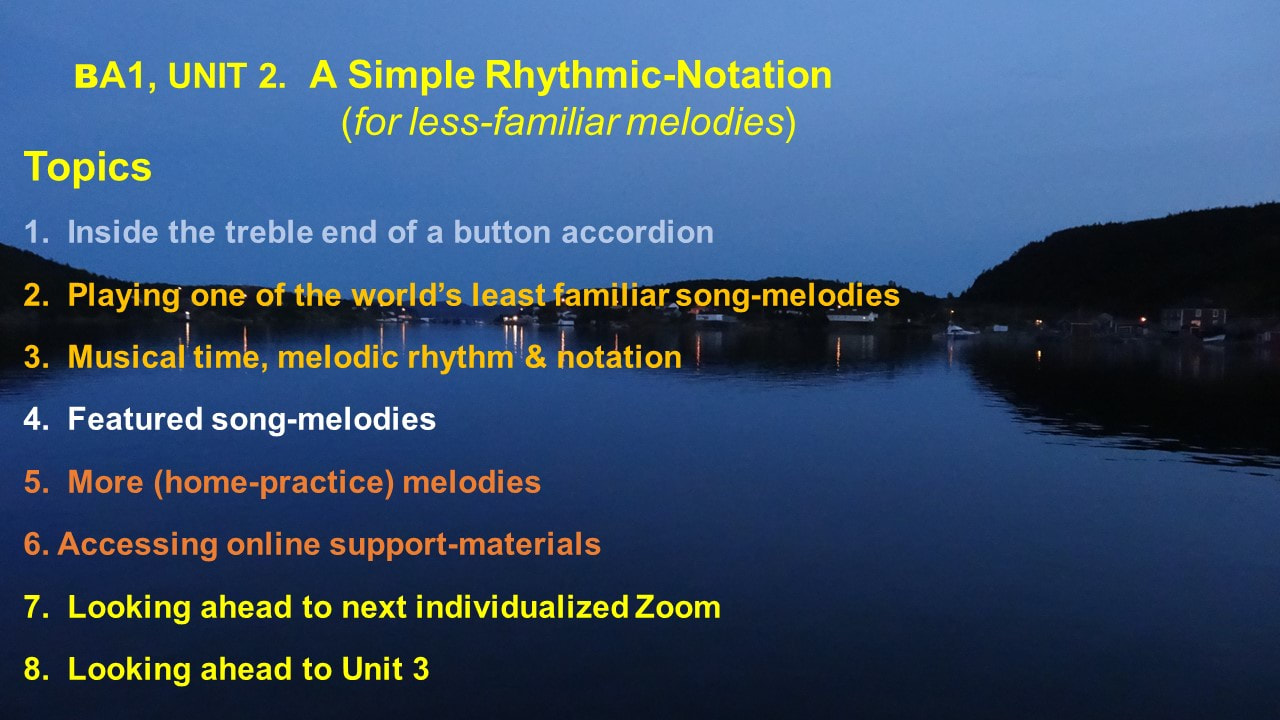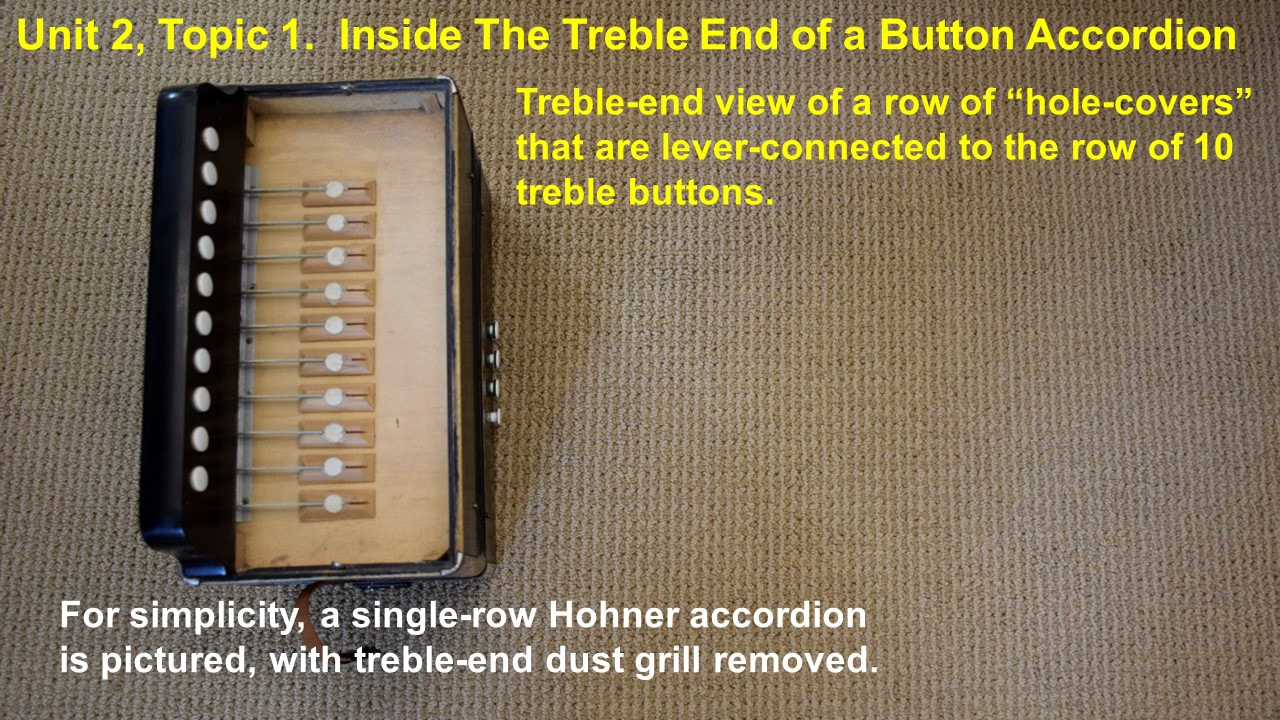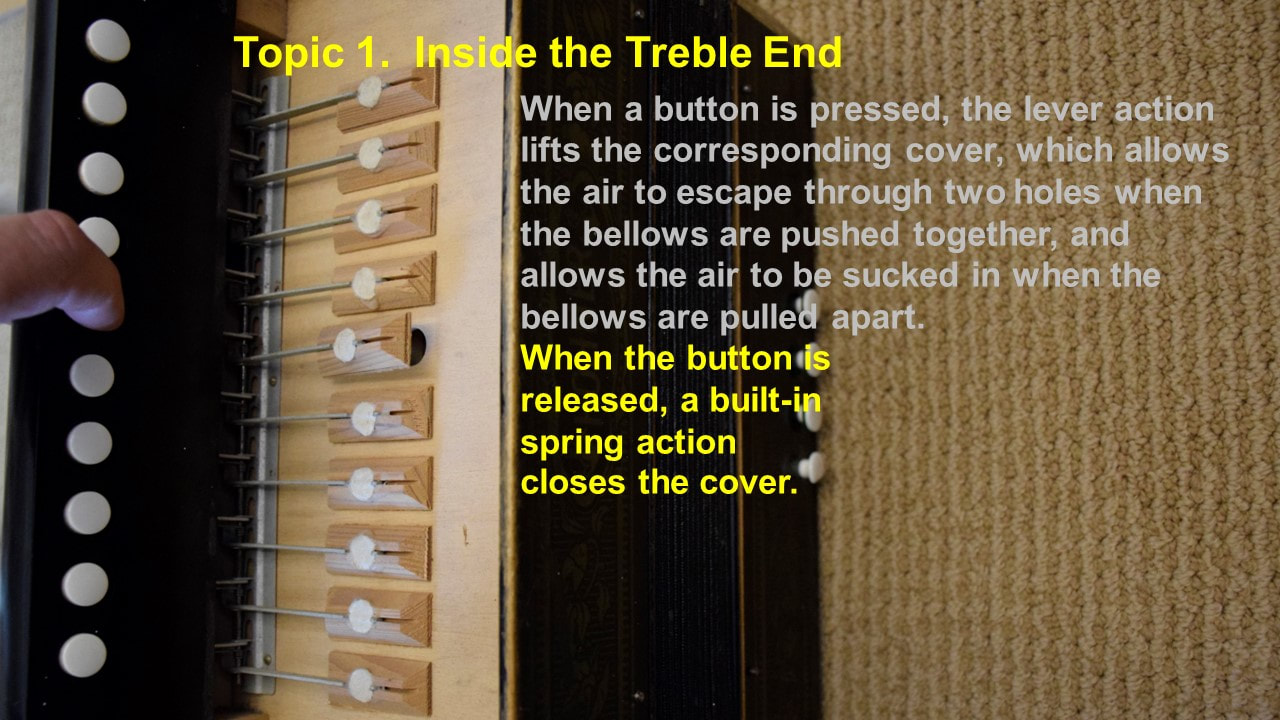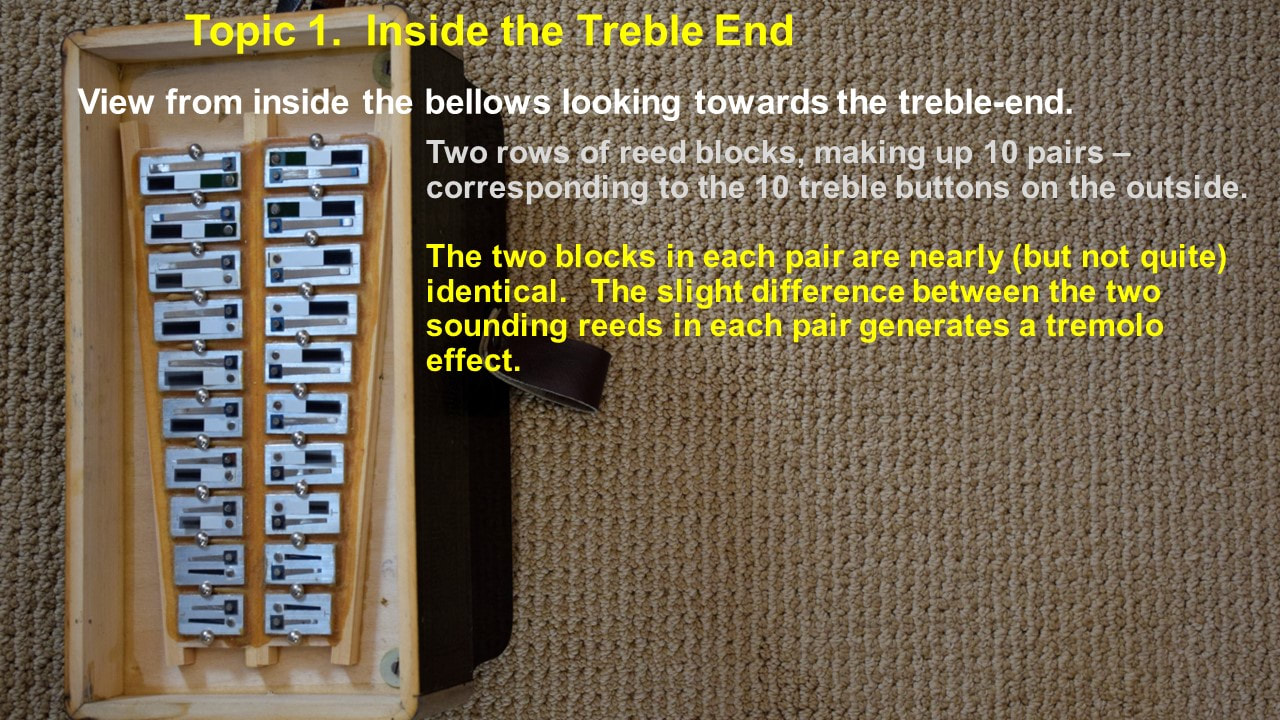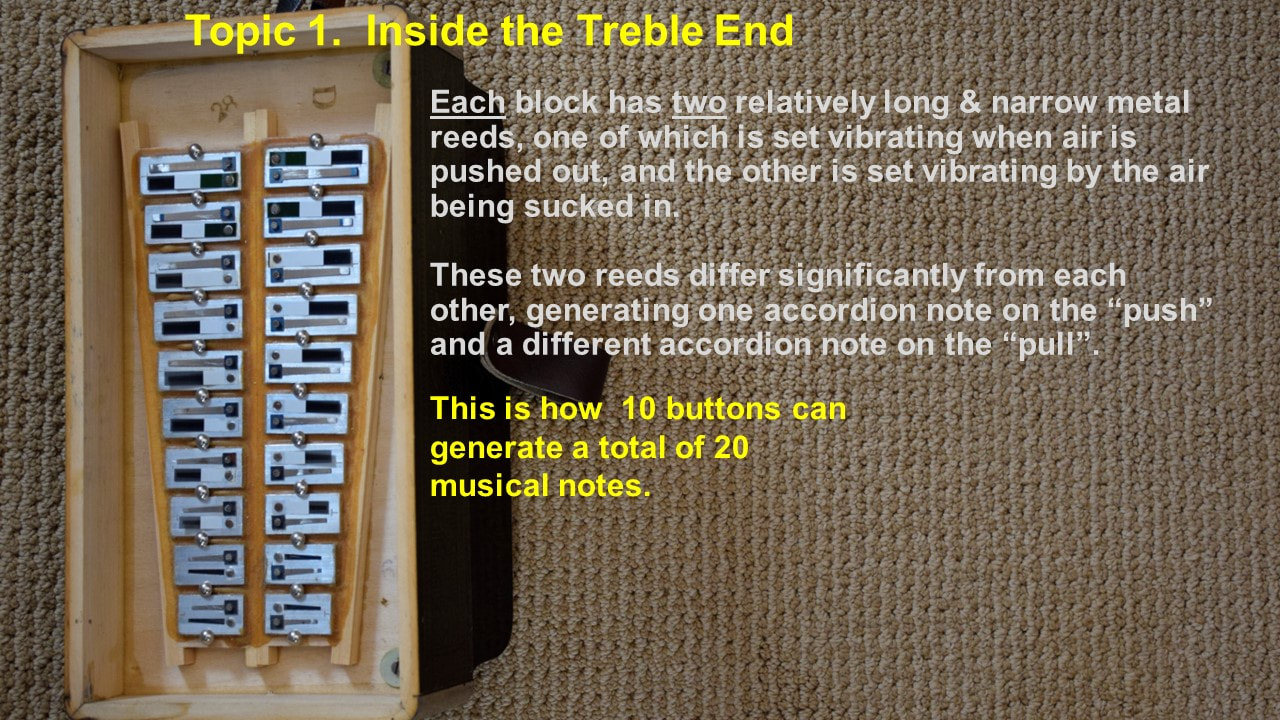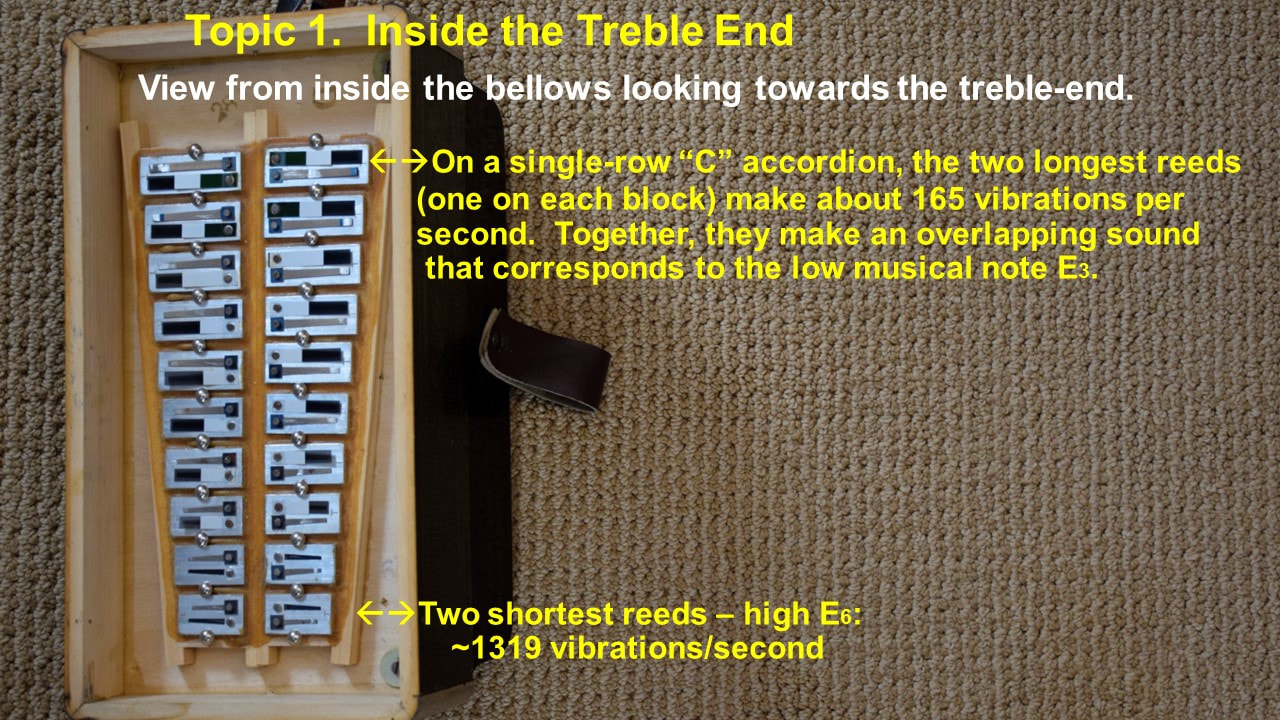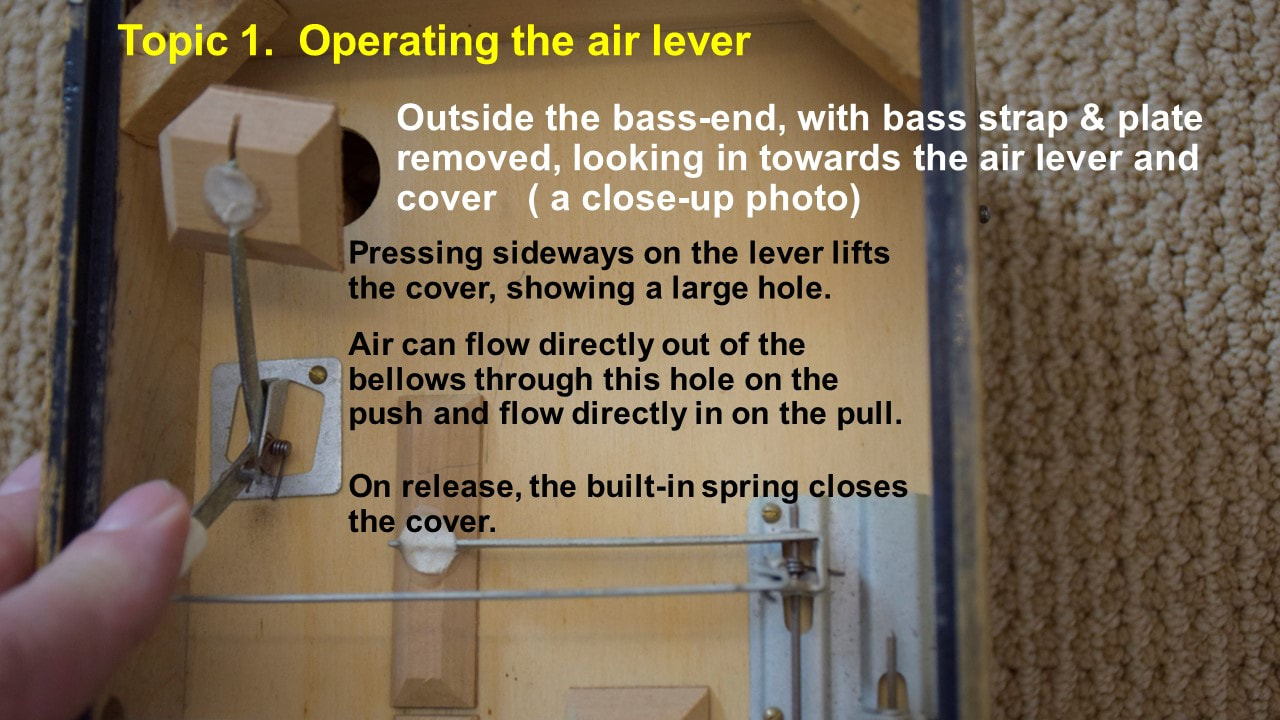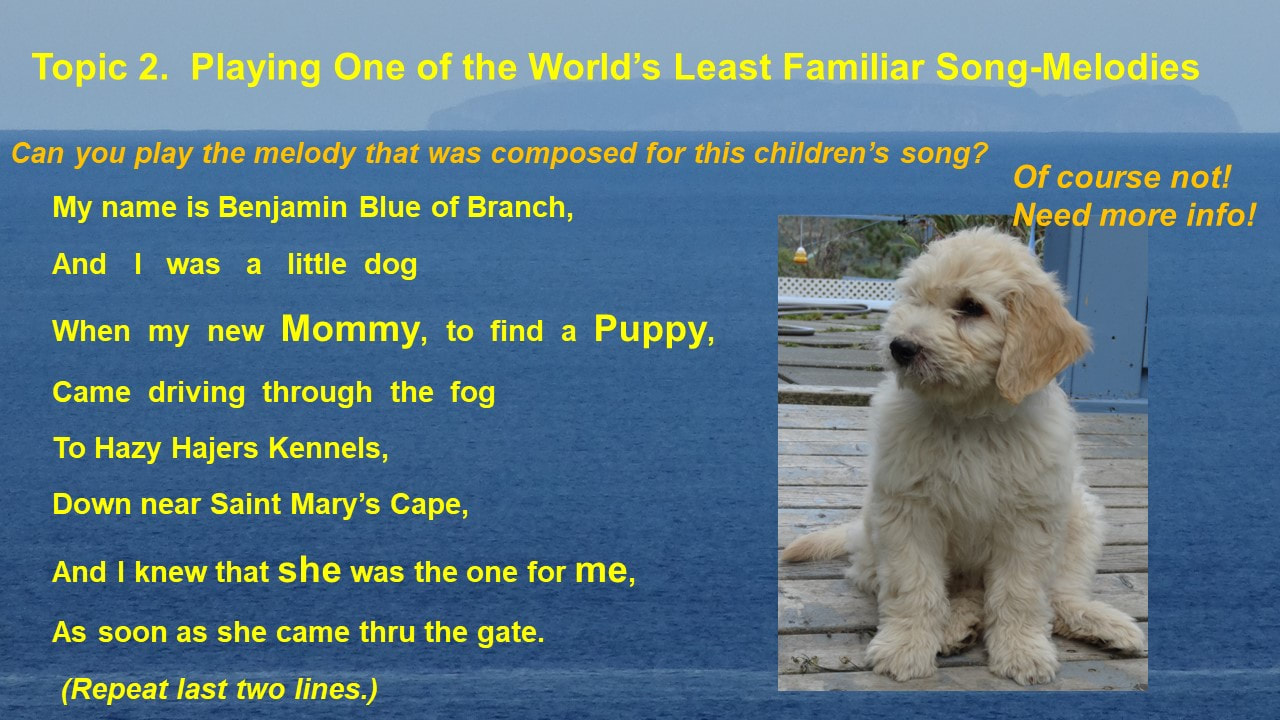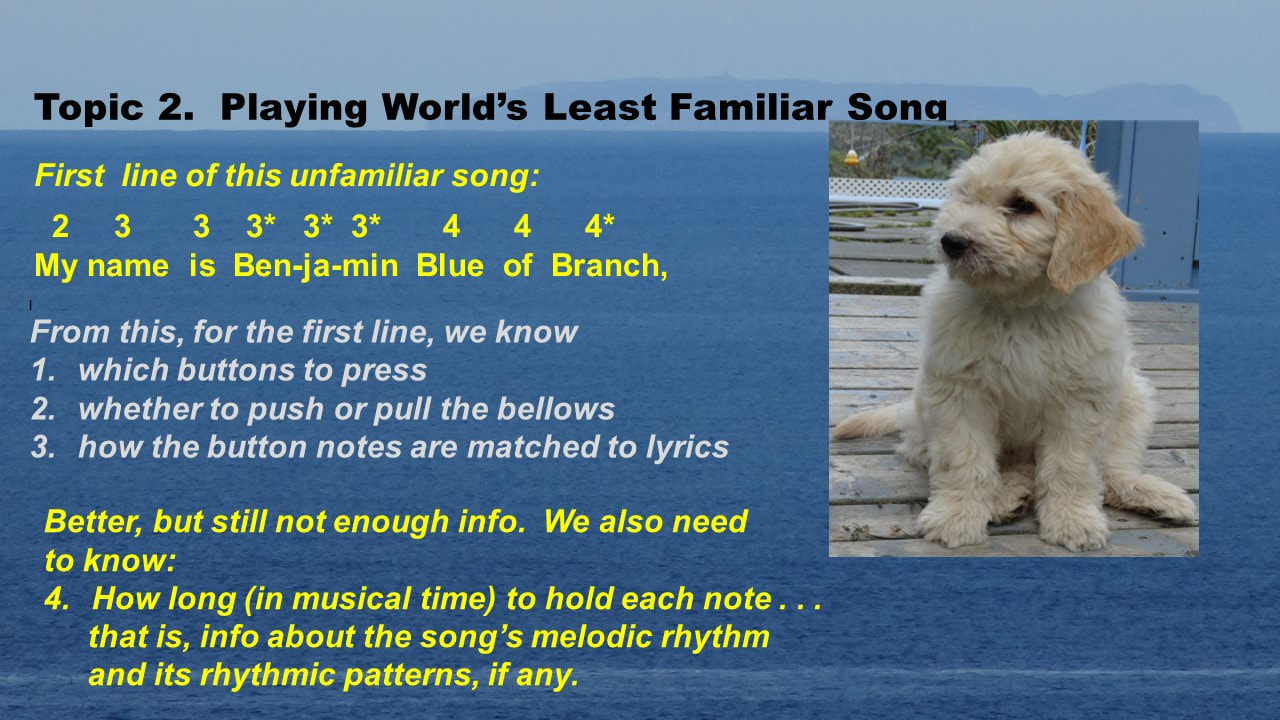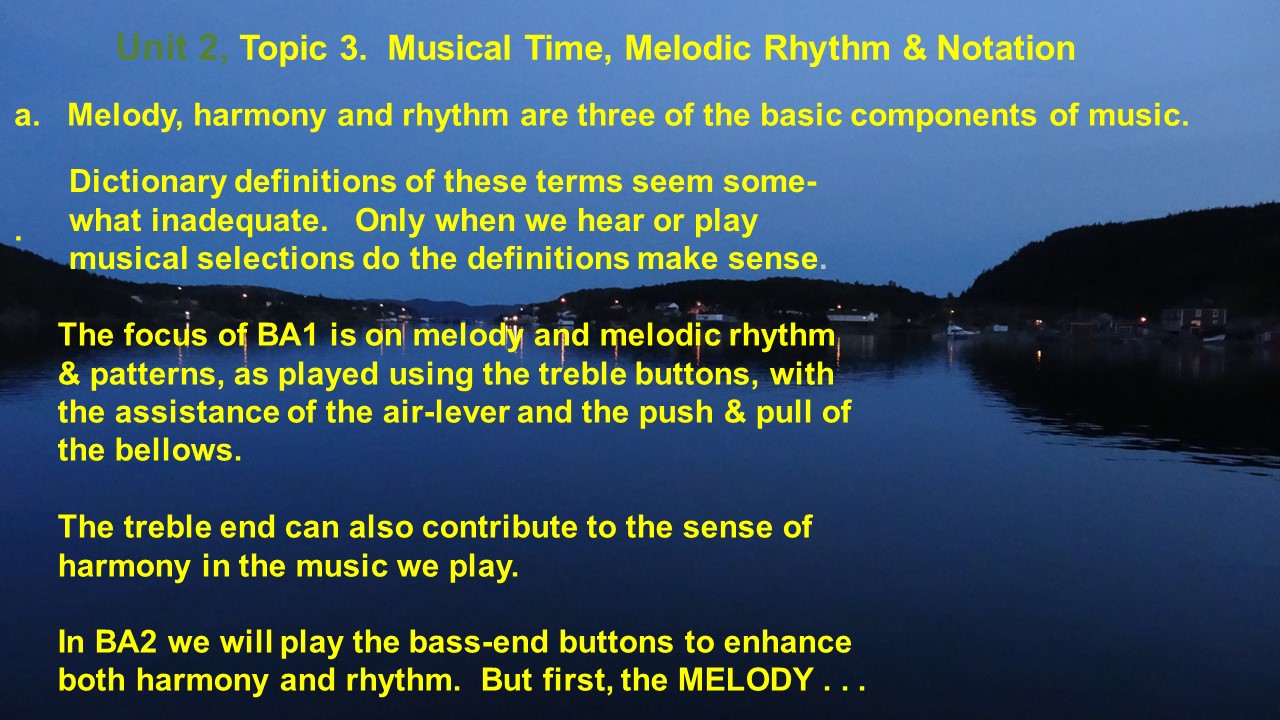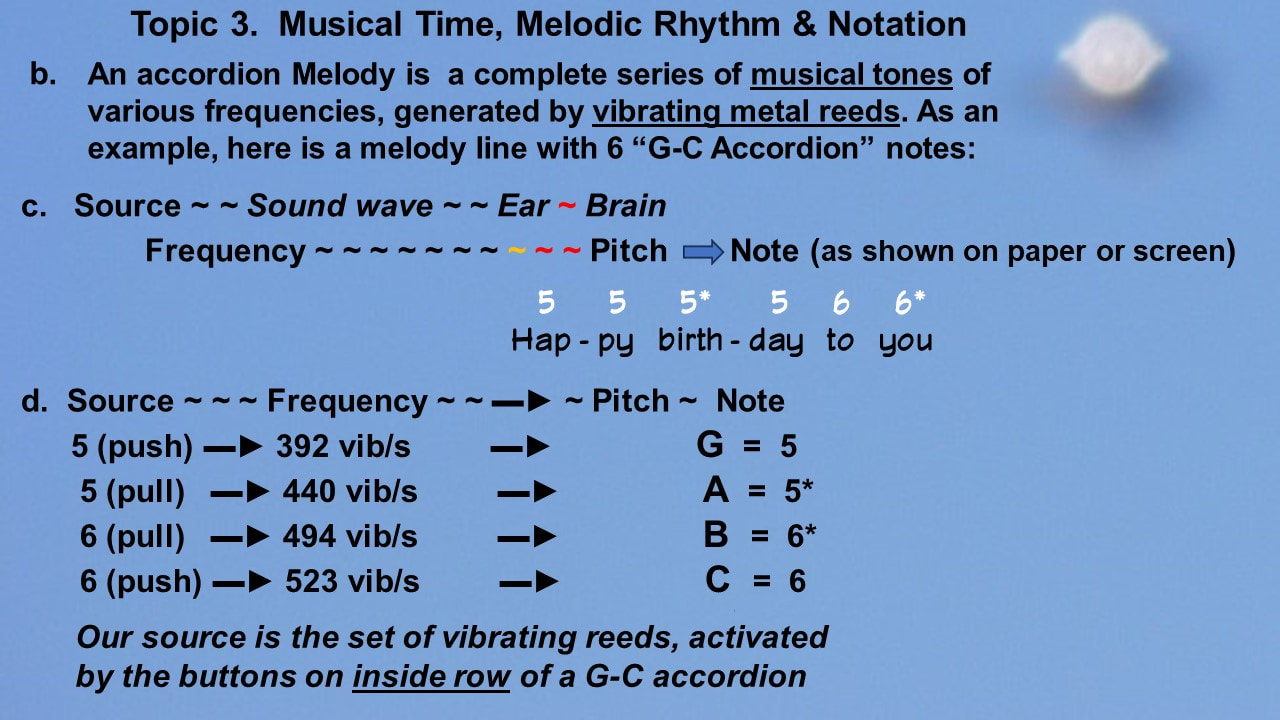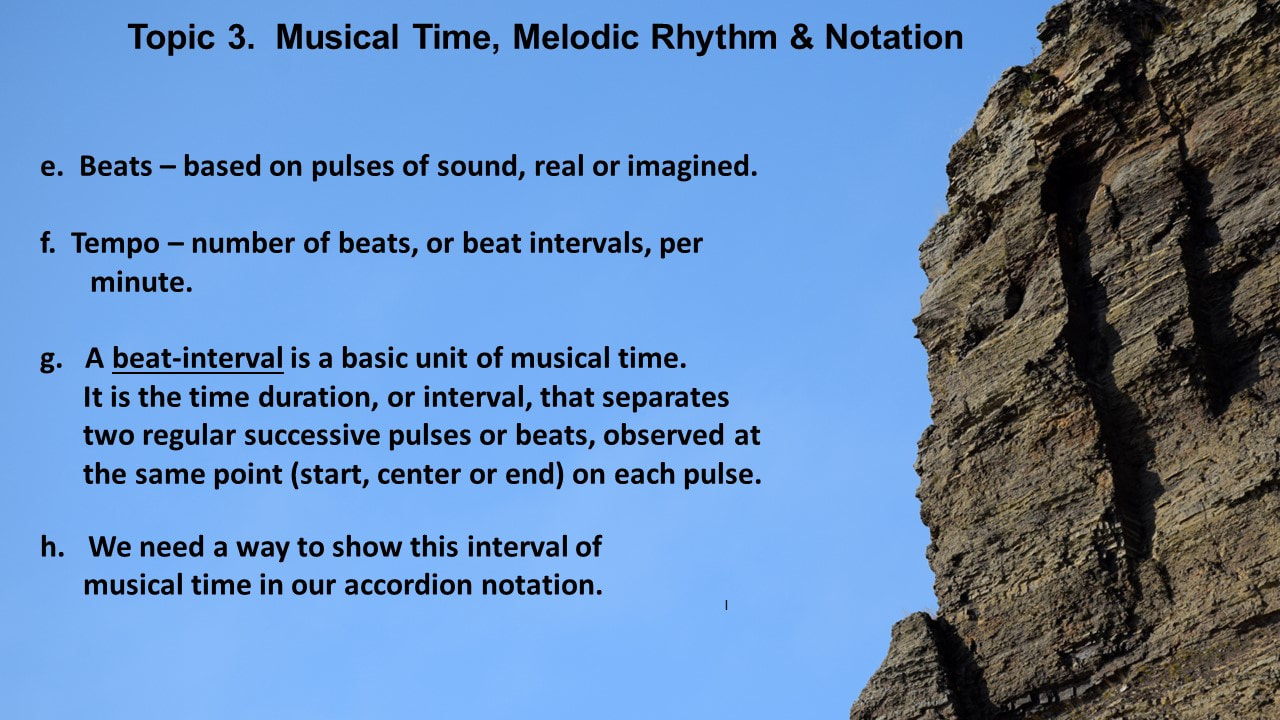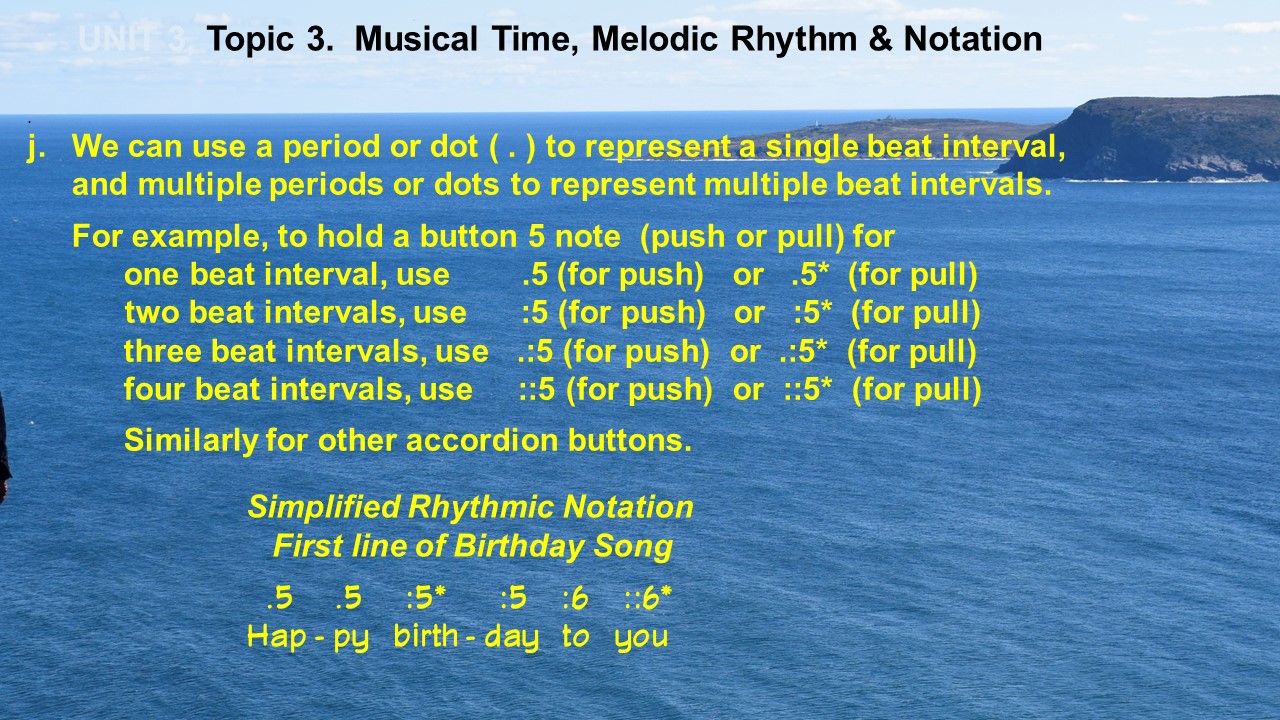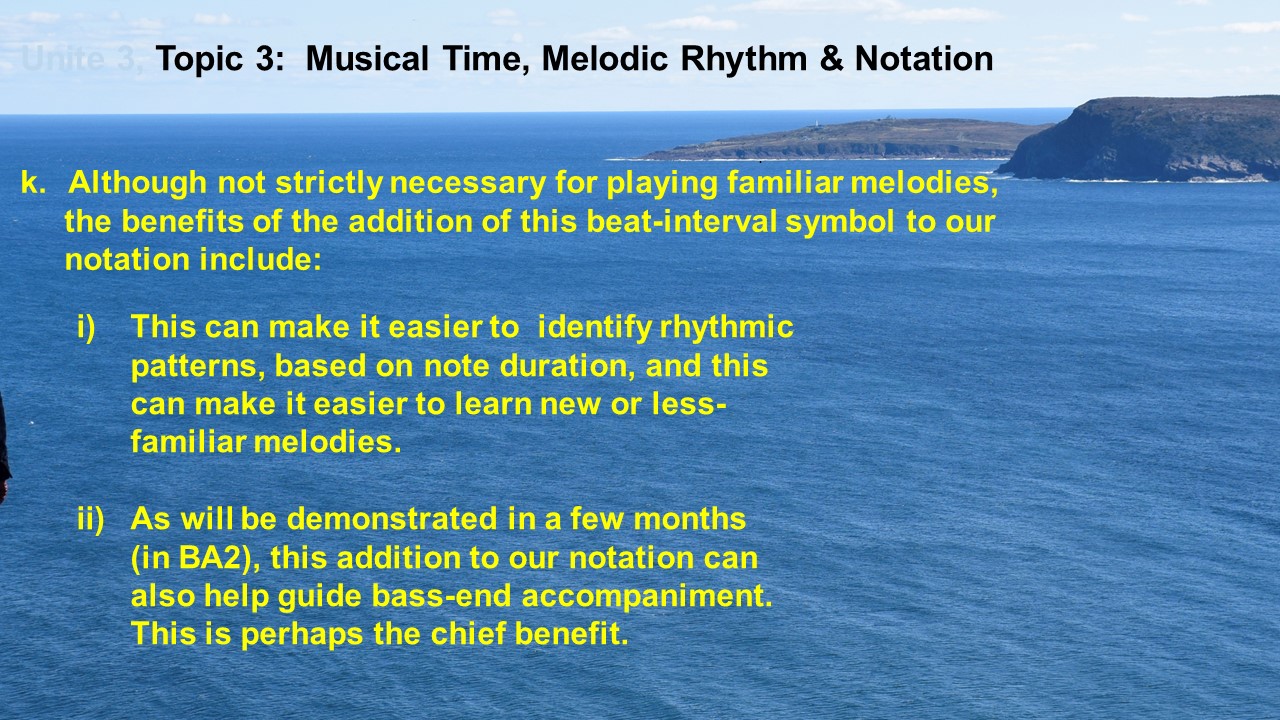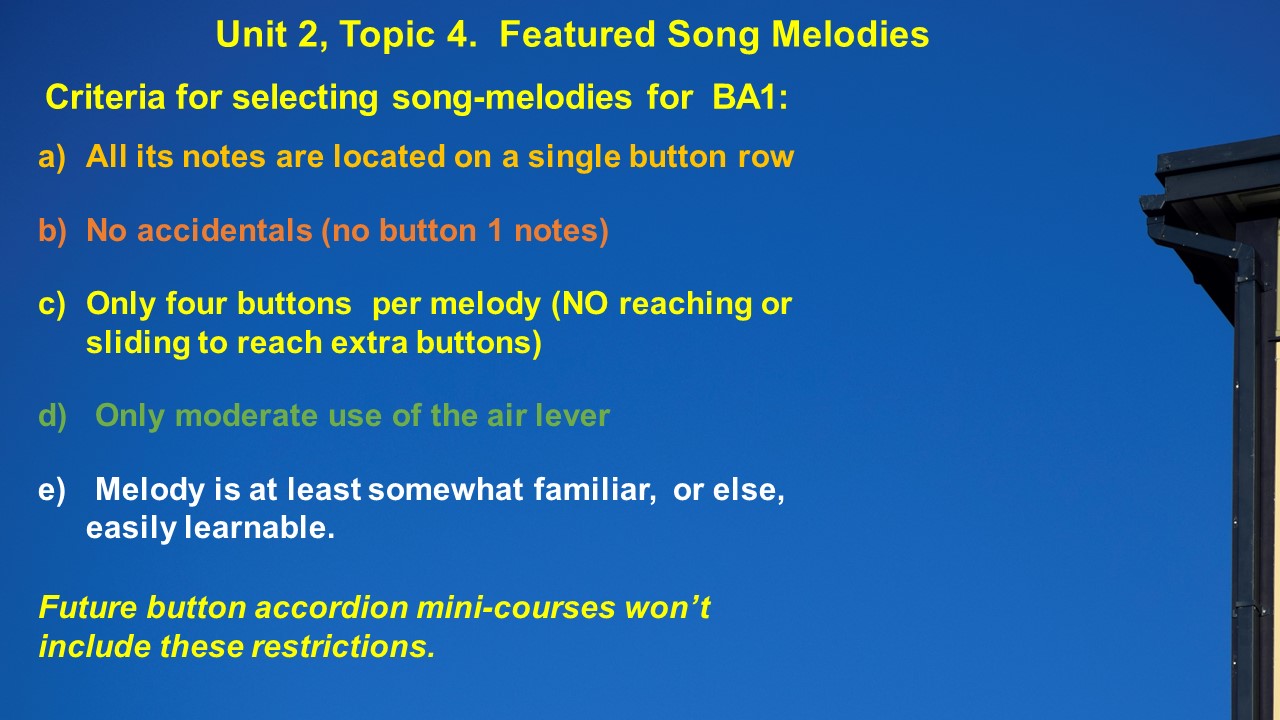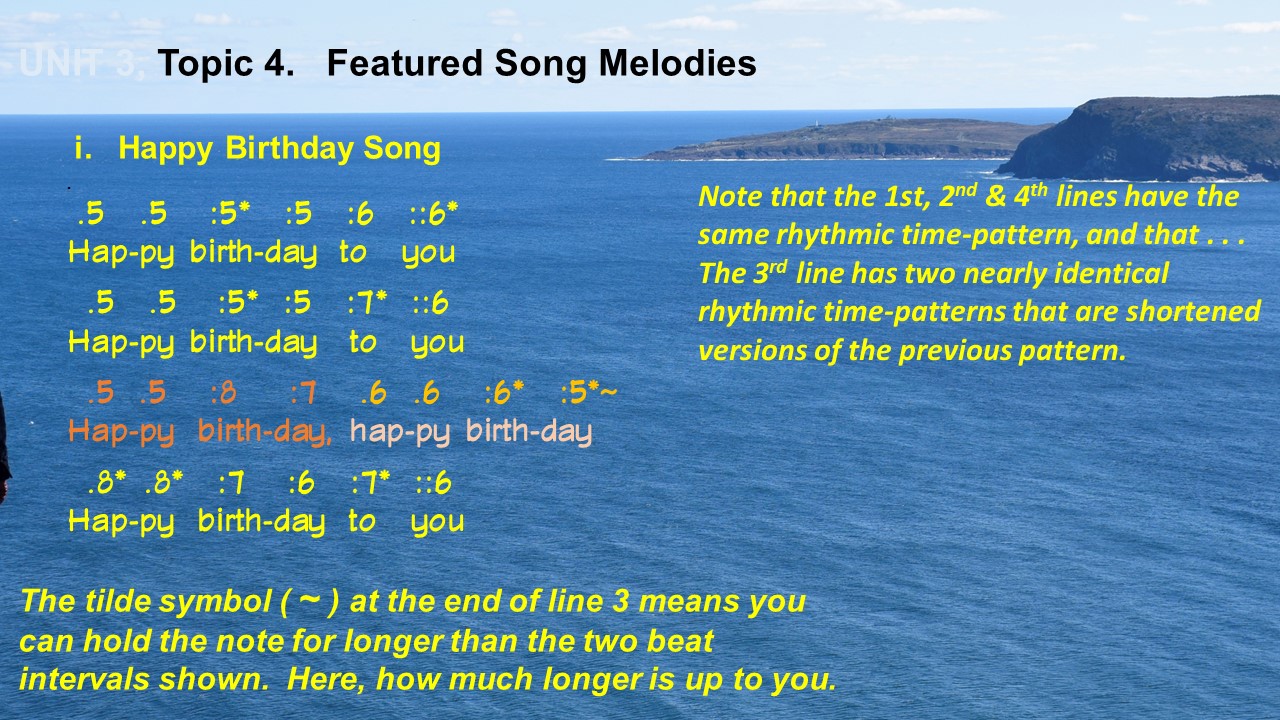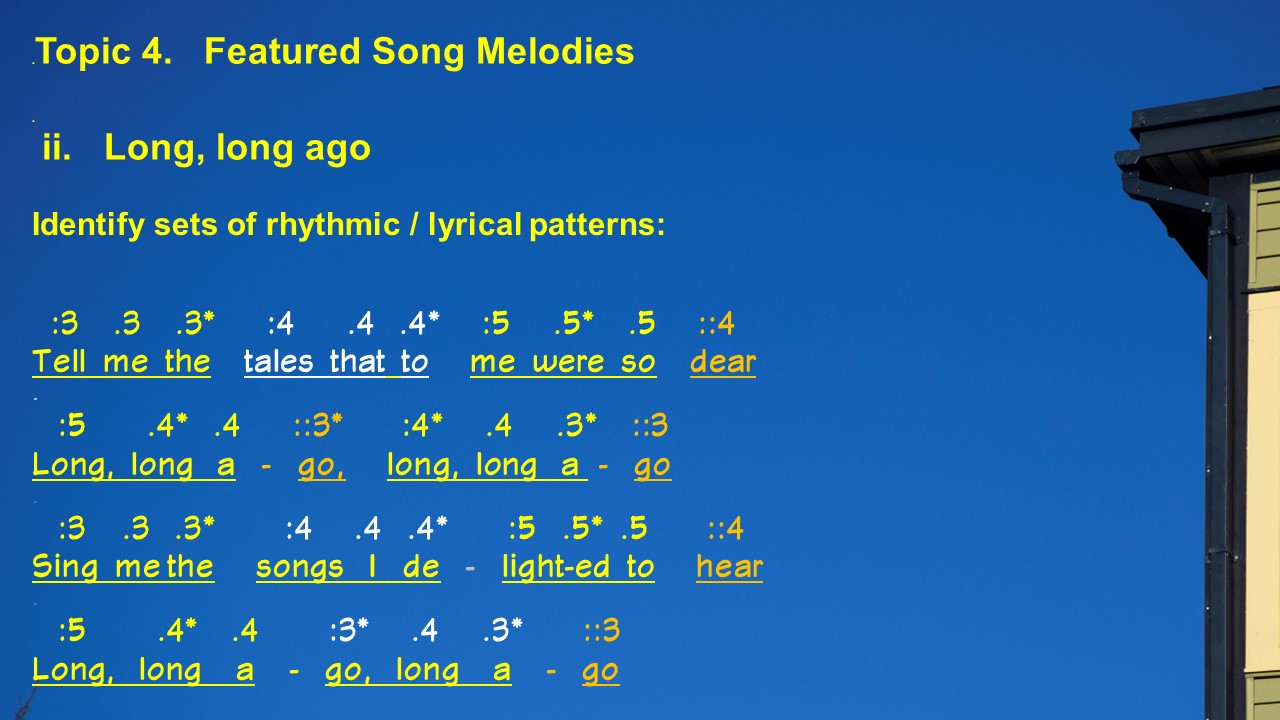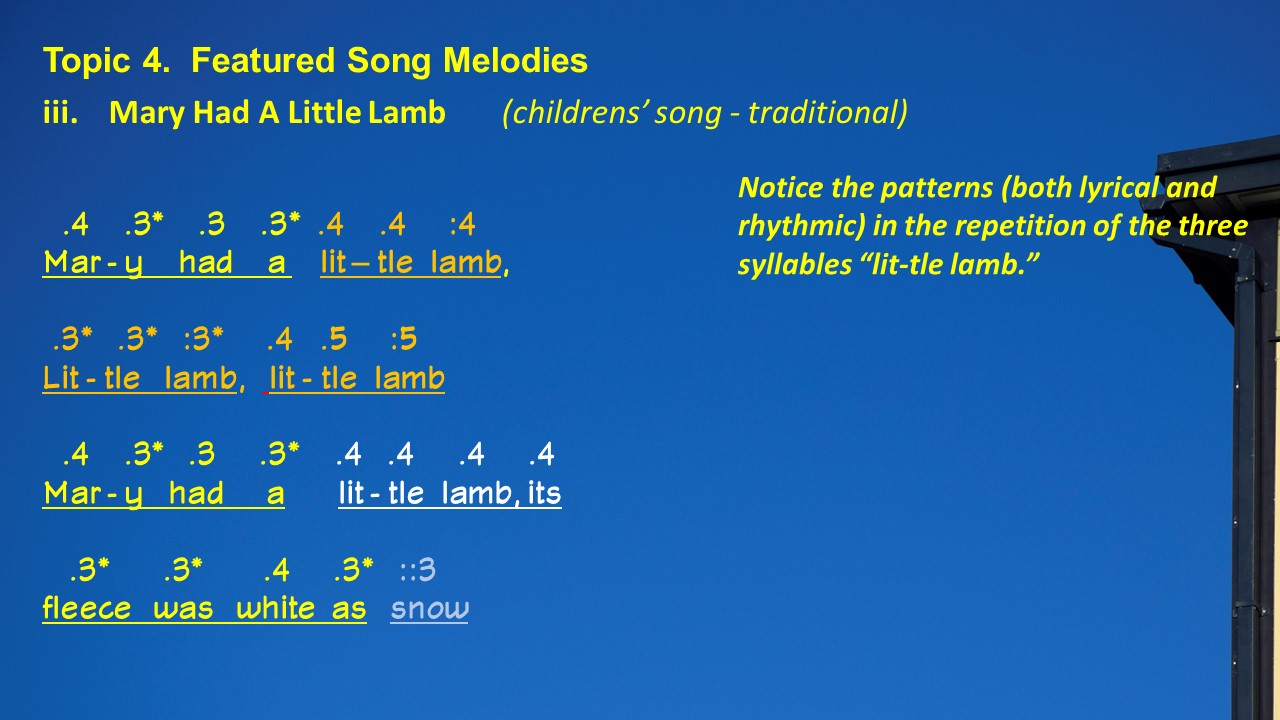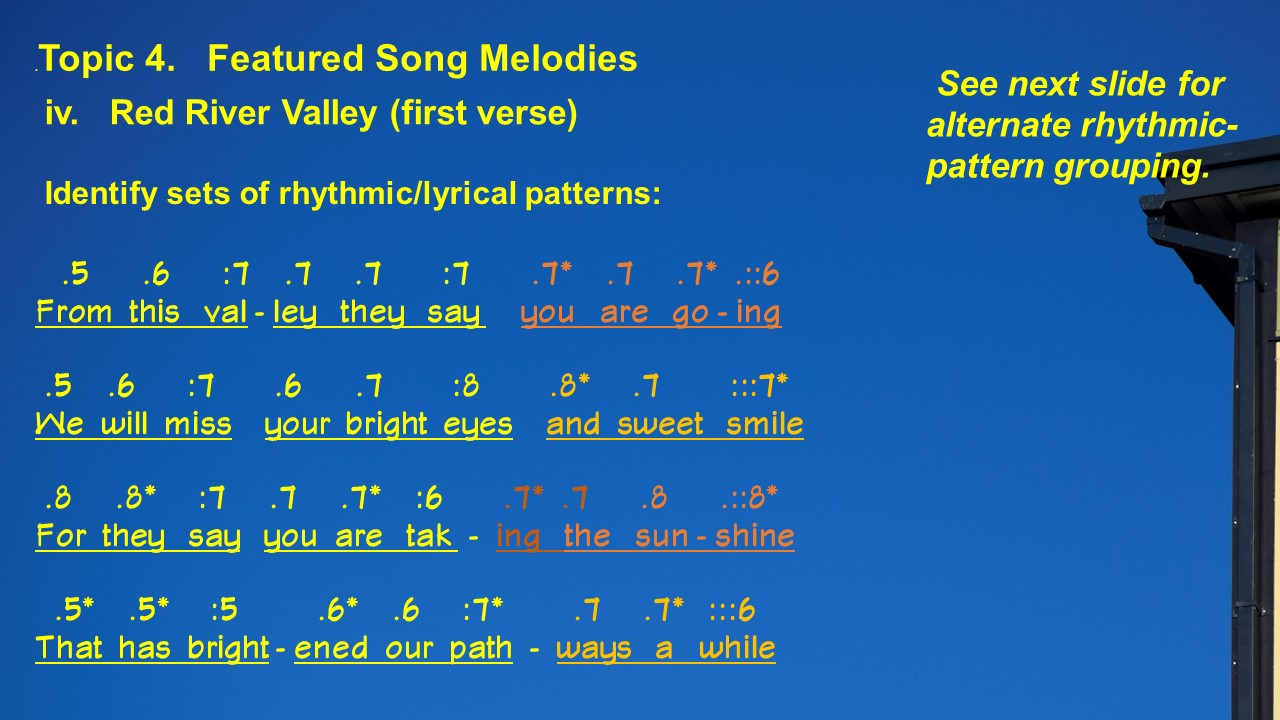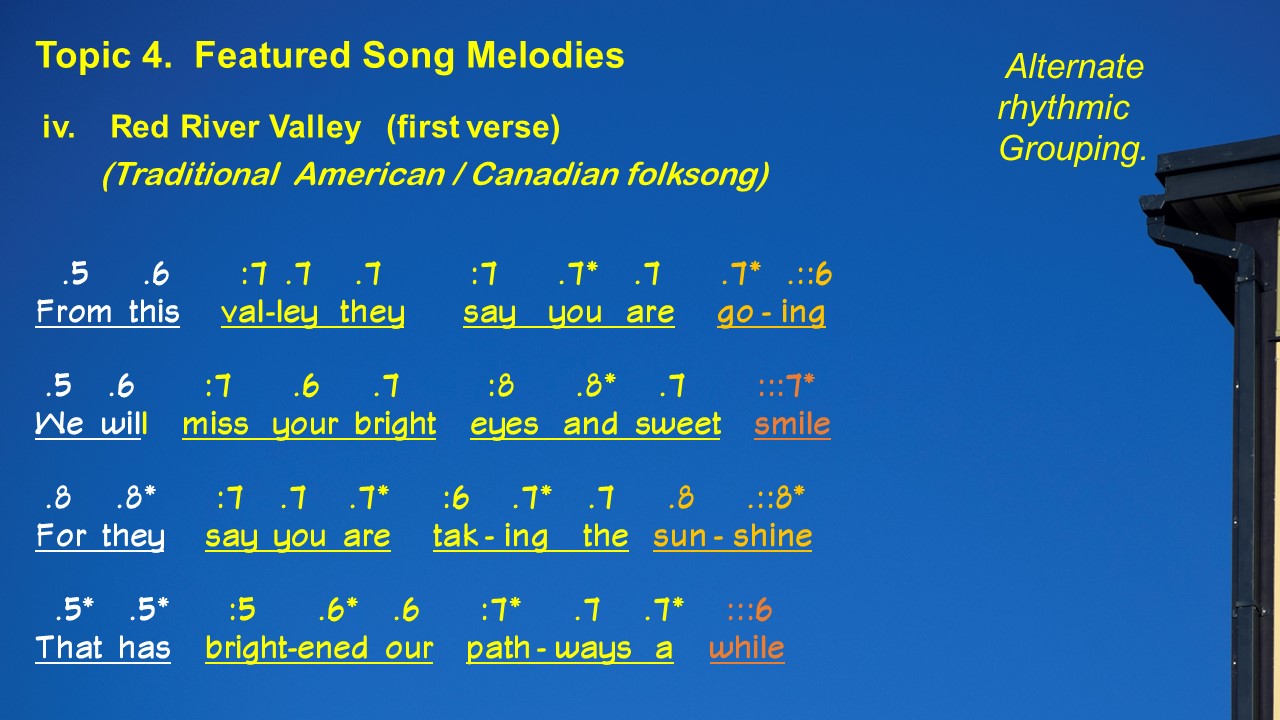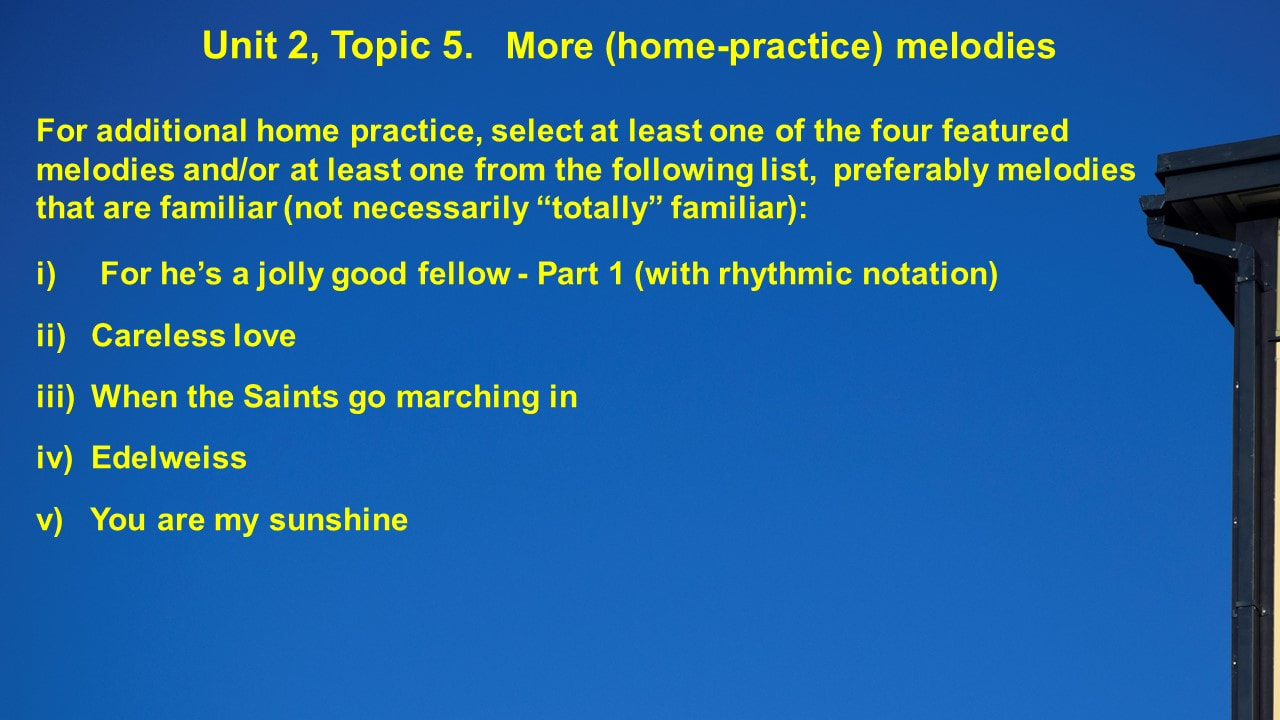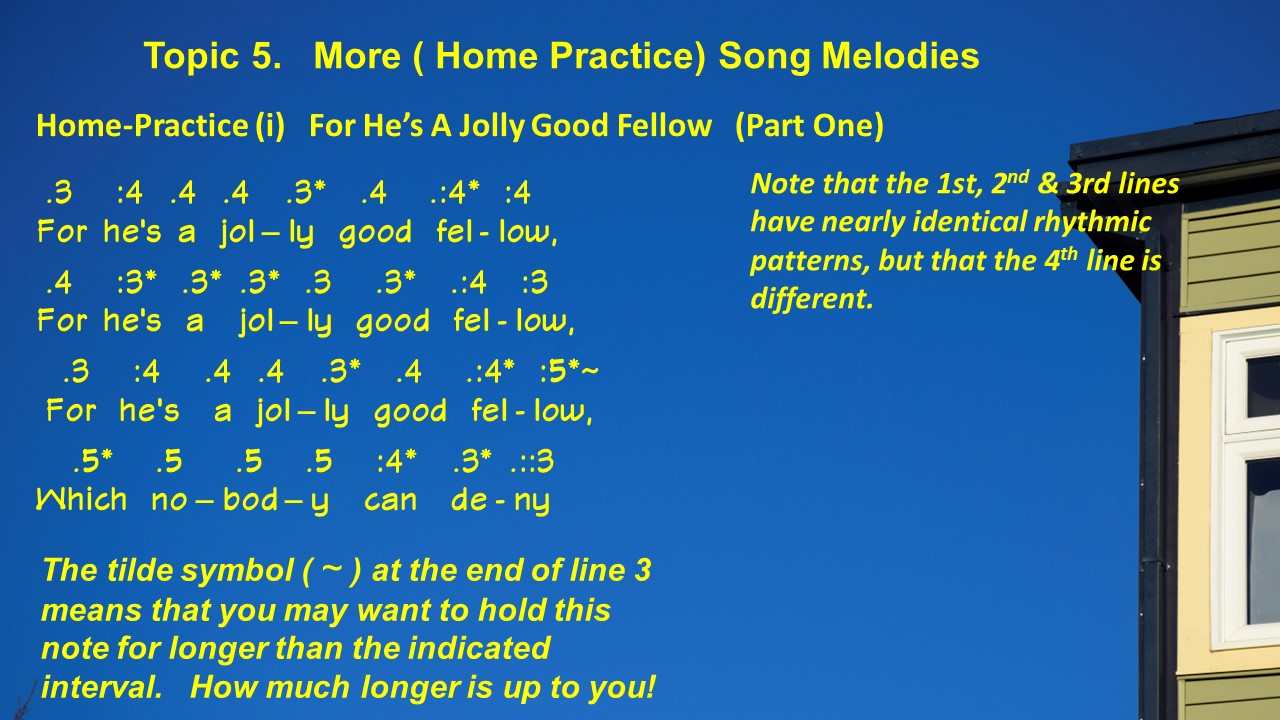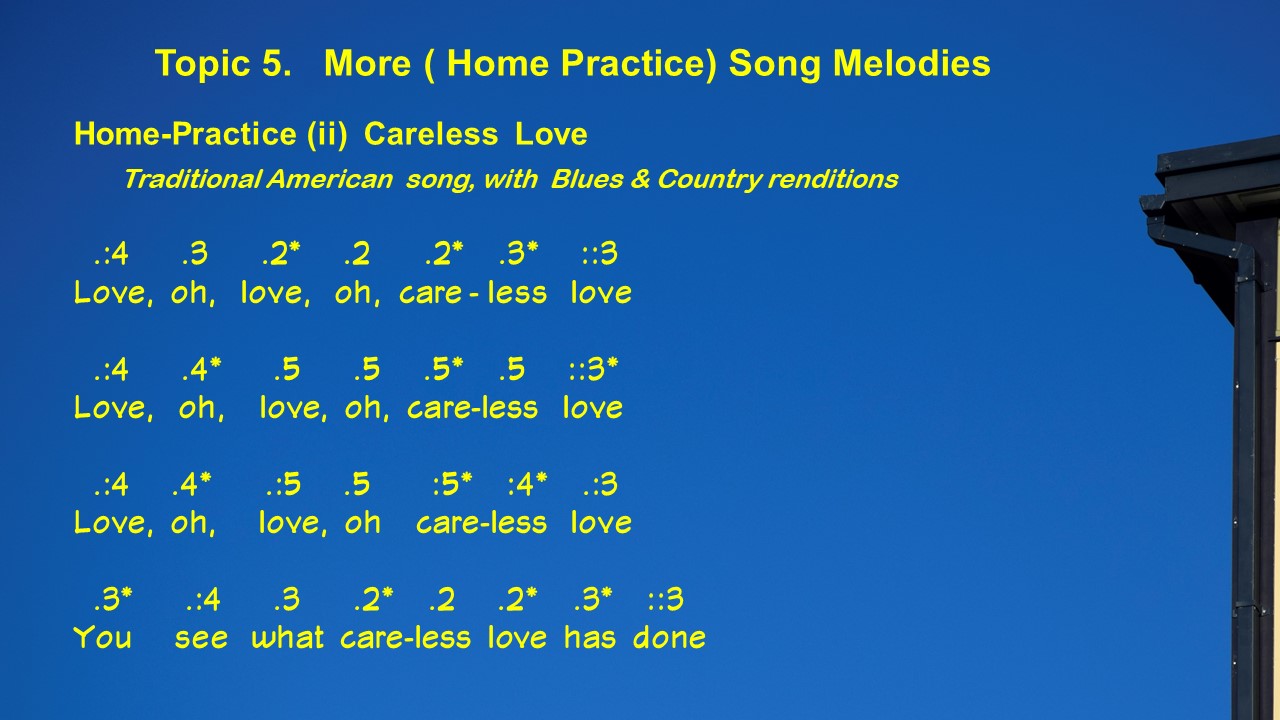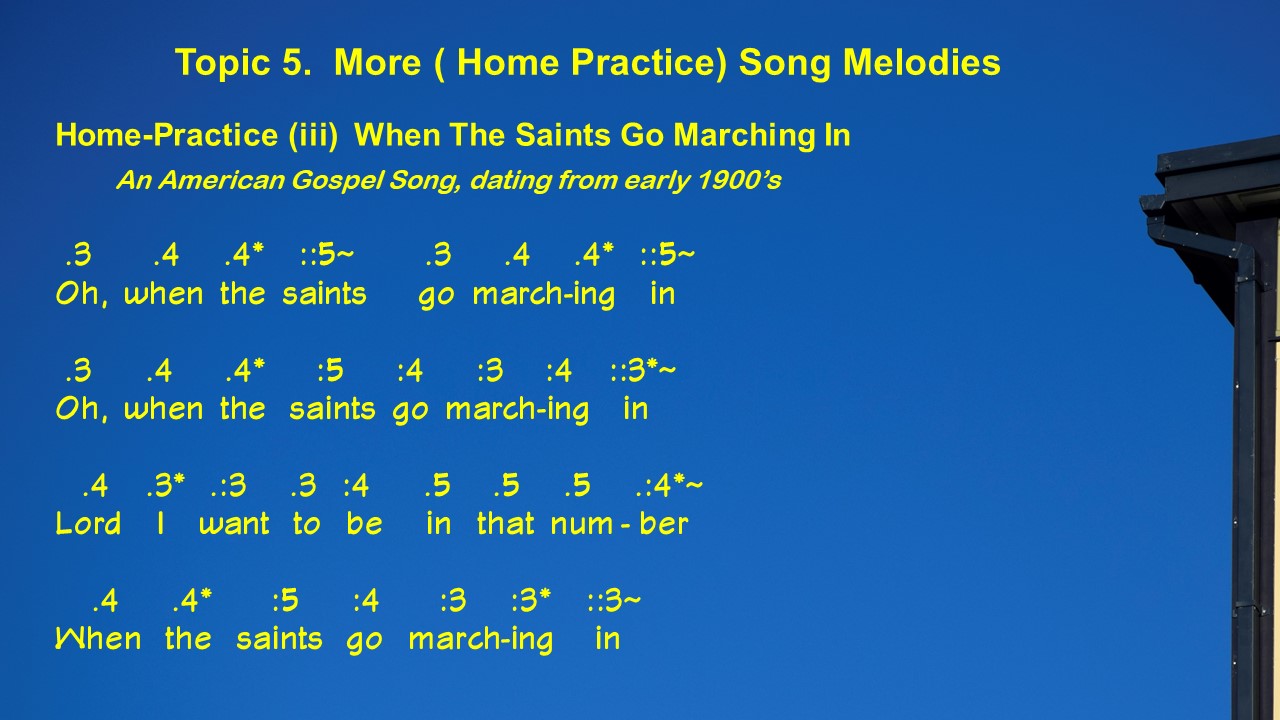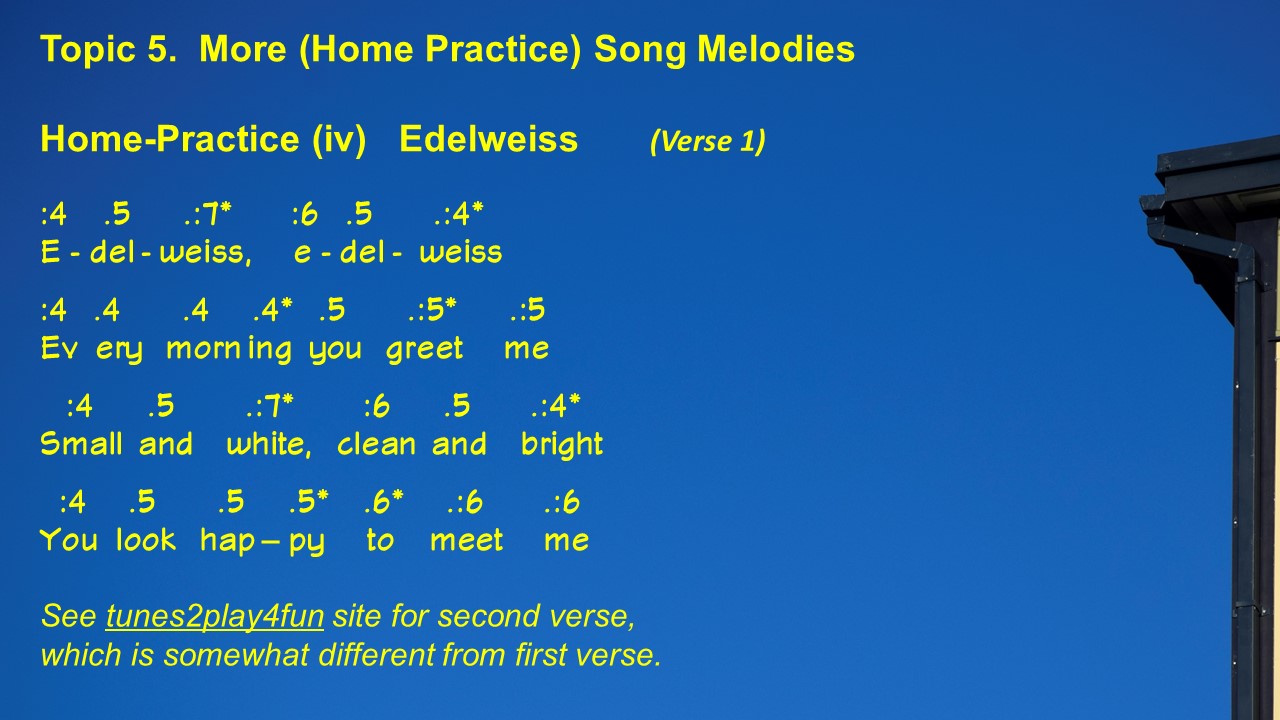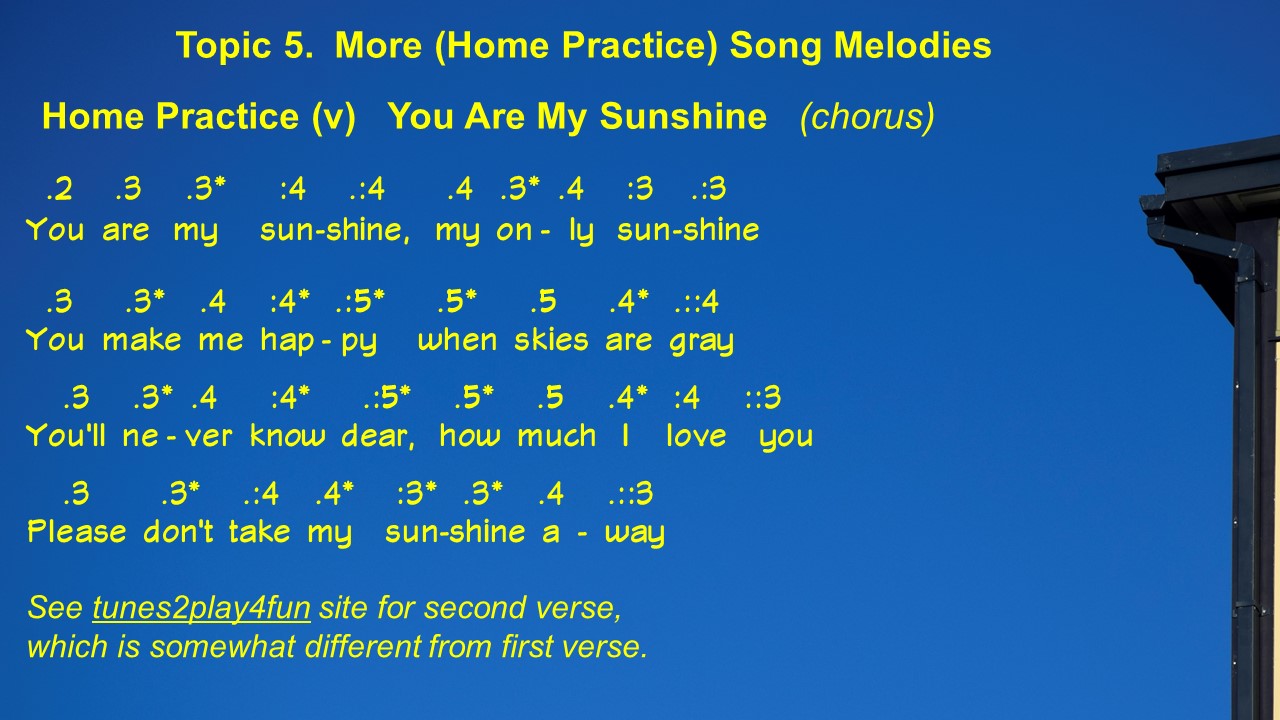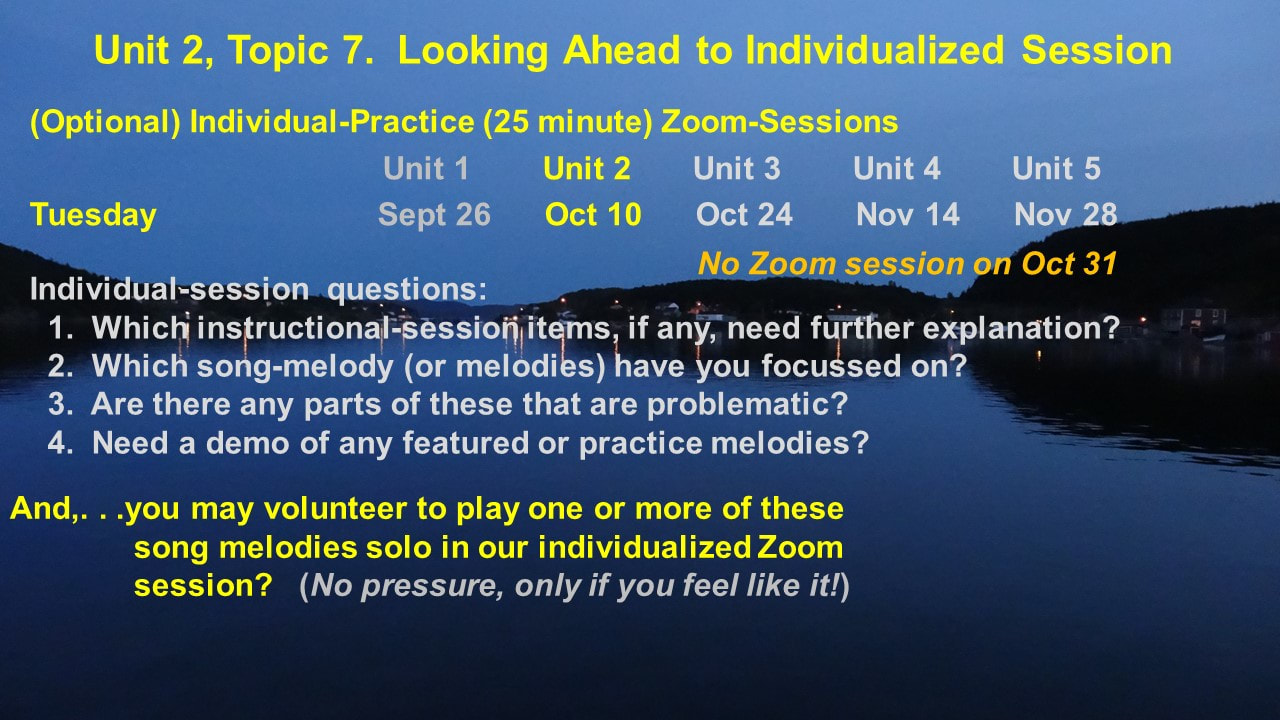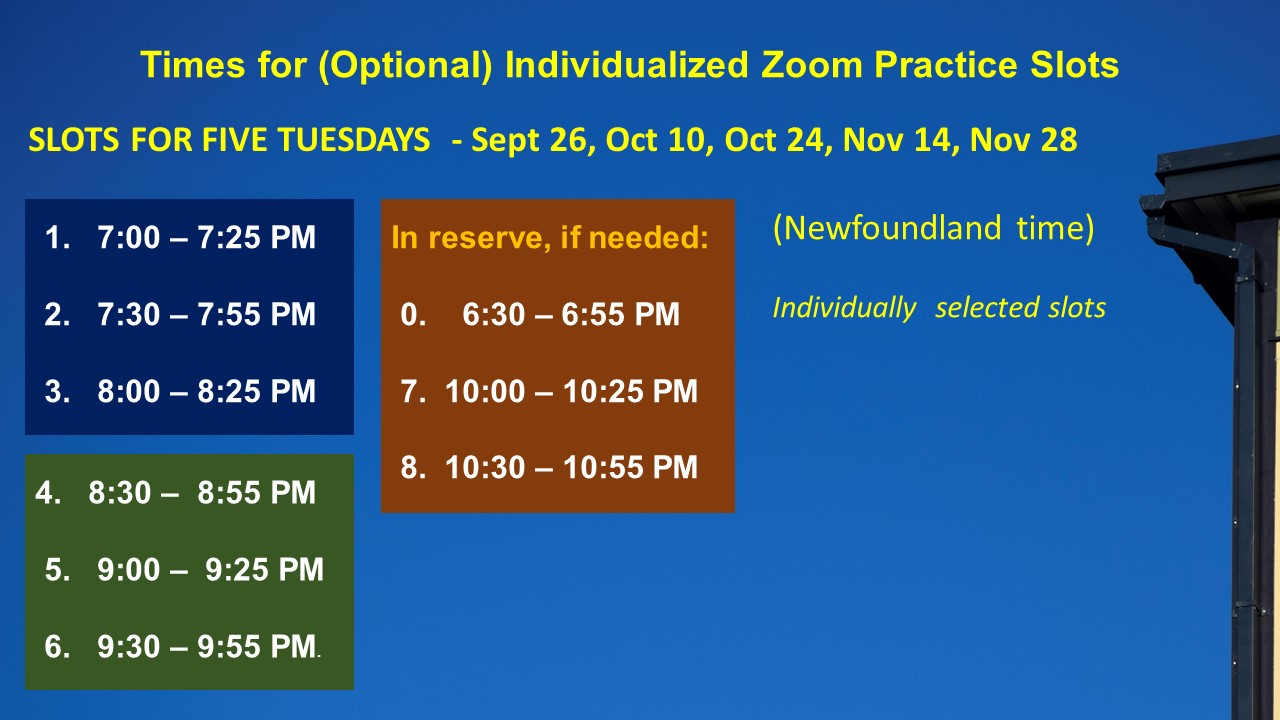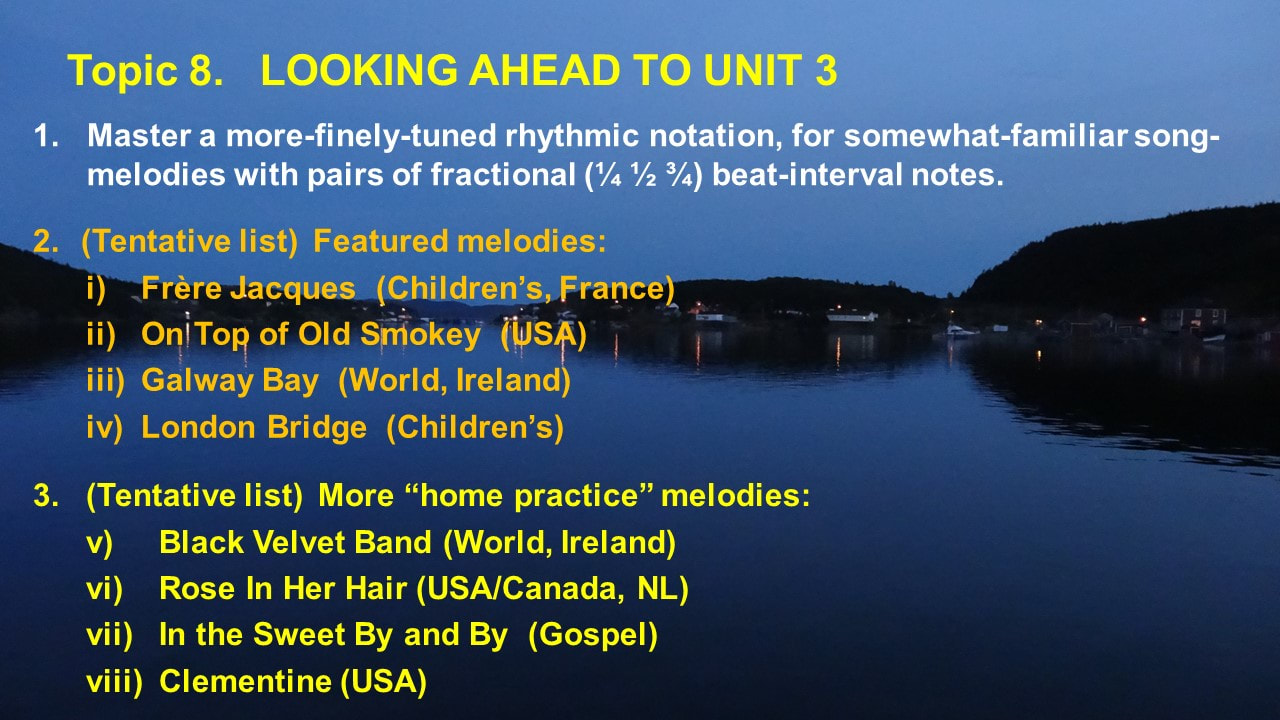MINI-COURSE BA1 - Basic Melodies
UNIT 2 (of Five)
A Simple Rhythmic Notation
(for playing less-familiar melodies)
ZOOM SLIDES (COMPACTED)
Web Slide 1 Zoom Slide 1
Web Slide 1 Zoom Slide 1
Web Slide 2 Zoom Slide 3
Web Slide 3 Zoom Slides 4 - 6
Web Slide 4 Zoom Slide 7
Web Slide 5 Zoom Slide 8
Web Slide 6 Zoom Slides 9 - 12
Web Slide 7 Zoom Slides 13 & 14
Web Slide 8 Zoom Slides 15 - 17
Web Slide 9 Zoom Slide 18 - 20
Web Slide 10 Zoom Slides 21 - 24
|
Web Slide 11 |
Although we going to develop a rhythmic notation for less-familiar melodies, I'm initially going to make the case using an unfamiliar one. This children's composition is one of the world's least familiar song melodies, because only about two dozen people have ever heard it. |
Zoom Slides 25-27 |
Using only the lyrics (above), it is near impossible to guess what the composer intended as a suitable melody. We need more info, some of which is given on the next slide.
Web Slide 12 Zoom Slides 28-31
Of course, if this were a very-familiar song-melody, the simple button-number notation might
be sufficient. But this is not a very-familiar song, so it would require additional musical-time information.
be sufficient. But this is not a very-familiar song, so it would require additional musical-time information.
|
Web Slide 13 |
A melody is, in part, a series of physical tones, in time, one after the other, forming a set. For the accordion, the tones are emitted by vibrating metal reeds and transmitted as music sound-waves.
|
Zoom
Slides 32-35 |
|
Web Slide 14 |
Sound-waves, within the audible-frequency range, can travel from a source (such as accordion reeds) to the ear, then are converted to electro-chemical signals that are transmitted to the brain, where, in part, they are perceived in terms of "pitch". The brain can then symbolically represent various musical pitches as notes, such as A to G, or as button-number notes. This slide shows how frequency (as quantified) and pitch (as labelled) are related in the "Happy Birthday" example. |
Zoom Slides 36 - 38 |
|
Web Slide 15 |
We first need a way of counting and indicating musical time. The most common unit of musical time is the "beat interval", sometimes lazily referred to as the "beat". In music, the "beat" is a regular pulse in time. It could be a drum beat, a guitar strum, a foot tap, a metronome click, etc. (real or imagined) To be precise, the "beat interval" is the period of time from the beginning of one pulse to the beginning of the next, or from mid-point of one pulse to the mid-point of the next, or ... from some point on a pulse to the corresponding point of the next pulse. The beat interval can be related to clock time by giving the number of beats per minute, sometimes called the "tempo", or "pace" or "speed" of the melody. |
Zoom Slides 39 - 43 |
|
Web Slide 16 |
For melodies that have a simple rhythm, I have found it convenient to indicate the simple beat interval using a period, or dot ( . ), and place it before the button number in our simple accordion notation. Think of it as a "period of time" being represented by the actual "period" symbol ( . ) |
Zoom Slides 44 - 50 |
|
Web Slide 17 |
When, in future Units we meet more complicated melodic rhythms, it should be easy to adapt or fit our simple "period" notation to those melodies as well.
The length in real time, in seconds or fraction of a second, of a beat interval can be quite different in different songs, even for different performances of the same song, even with the same rhythmic patterns. When first performed, it is often up to the composer, or the music director, or the band leader, or the first performer to determine the length of a beat- interval, that is if the melody is tobe played somewhat quickly, moderately, or somewhat slowly. When you are playing solo, it is entirely up to you. I should stress that rhythmic patterns are an important part of music. The creative combination of pattern variety and pattern repetition makes for interesting and enjoyable music. Here, however, our initial interest is in using these rhythmic patterns as a learning aid, helping us to break verses and lines of music into smaller units or chunks, each of which can be practiced separately, and then combined. |
Zoom Slides 51 - 53 |
Web Slide 18 Zoom Slides 54 - 59
Web Slide 19 Zoom Slide 60 - 62
Web Slide 20 - 22 Zoom Slides 63 - 66
Web Slide 23 Zoom Slides 67 & 68
Web Slide 24 Zoom Slides 69 & 70
Web slide 25 Zoom Slide 71
Web Slide 26 Zoom Slide 72
Web Slide 27 Zoom Slide 73
Web Slide 28 Zoom Slide 74
Web Slide 29 Zoom Slide 75
Web Slide 29 Zoom Slide 75
Web Slide 30 Zoom Slide 76
Web Slide 31 Zoom Slide 77
Web Slide 32 Zoom Slide 78 - 82
Web Slide 33 Zoom Slides 83 - 85
Web Slide 34 Zoom Slide 86
Web Slide 35 Zoom Slides 87 - 89
Web Slide 36 Zoom Slide 90
